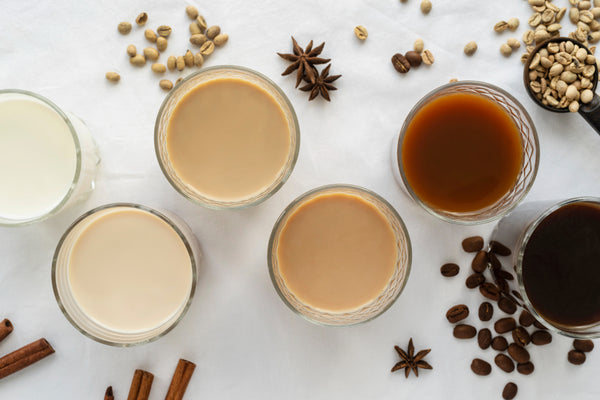What are ways to improve your coffee palate?
- Understanding the basic tastes
- Drink a variety of coffee
- Use your nose
- Build your references
- Keep a coffee journal
- Use a flavor wheel and sensory lexicon
- Try triangulation practices
Coffee is a dynamic beverage — there are hundreds of different flavors and aromas to explore, with your palate being a critical part of this experience. Without a well-developed palate, your ability to experience the depth, complexity, and uniqueness that each coffee has is limited.
Luckily, there are ways to improve your coffee palate, and we’d like to share a few practices you could try.
Understanding the Basic Tastes
One of the first things to work on is your understanding of the basic tastes of coffee. While there are over 800 unique aromatic compounds that create varying flavors and aromas in coffee, they can be summarised into the following categories:- Aroma
- Acidity
- Body
- Aftertaste
- Balance
- Sweetness
- Flavor
Try focusing on one category at a time every time you take a sip of your coffee. This is a great way to get your senses to focus on the different characteristics before you get used to carefully tasting your coffee.
Once you’re able to confidently identify each element, start asking yourself the specifics: i.e. the intensity and type of sweetness, acidity, flavors, etc. You can use our cupping guide, to help you out on this practice.
Drink a Variety of Coffee

You can also check out the descriptors on our product pages — like this one on our Weekender blend — to pick out different coffees for your journey. We use these descriptors to give you an idea of their profile, which is a good way to pick out different tastes you haven’t experienced yet. These labels also make it a lot easier to understand what flavors you could try and pick up in each cup.
Use Your Nose
Smells are a huge factor in what you taste. This is true with your coffee palate, which is why the aroma is one of the first things you notice.Before you start drinking your coffee — sniff it. Make sure to smell your coffee before and during brewing too. By taking in its aroma, you’ll be priming your senses for its flavor when you take the first sip.
Build Your References

Understanding what you’re tasting and smelling is one of the harder parts of the experience, but it is possible when you have many references to work with.
Start by introducing new foods into your diet. Many coffee descriptors list foods like fruits and chocolates — like our Caliking, which has tasting notes of orange peel and chocolate — so you can try adding a variety of those.
Keep a Coffee Journal
To help you increase your awareness and also keep a record of your progress, make sure to write your experiences down. Keeping a coffee journal can also help you articulate what you’re tasting in finer detail.You don't have to journal every coffee you drink, but occasionally keeping a log can help you focus on the coffee you’re trying. While this doesn’t directly develop your palate, it helps you to think and taste more actively, which in turn makes you more efficient and productive in your practice.
Use a Flavor Wheel and Sensory Lexicon

The SCA’s flavor wheel breaks down the primary flavors in coffee per category. If you’re unfamiliar with this tool, then we recommend using their guide here to start. You should try mastering the broader flavors to start, before working your way towards the more specific descriptors.
The WCR’s sensory lexicon works in tandem with the flavor wheel. It provides more details and a standardized language that coffee professionals use to talk about different flavor categories. The lexicon also provides a frame of reference and intensity scales to use in your drinking experience.
After using these tools, you will find that you’re able to discern more about a cup of coffee. You will also be able to pick out different aspects that you enjoy, and ones that you do not. This is a sign that your palate is slowly improving and becoming more refined.
Try Triangulation Practices
Our final tip for developing your coffee palate is to use triangulation practices. It’s a practice that coffee tasters use, and it’s an excellent way to hone and evaluate your current sensory abilities.To triangulate coffee, you set out three cups labeled A, B, and C. Two cups contain the same coffee, while one will contain a different kind. The point is to smell and taste each cup, then identify which is the odd one out. The more similar the coffees are, the more difficult this is to do.
You can ramp up the difficulty of this exercise depending on how refined your palate is. You can also play around with different varietals, origins, roasts, and blends for this — just try it out and have some fun!
Key Takeaway
If you’re someone who is less experienced with tasting coffee, don’t worry — there are many ways to improve your coffee palate. Following the exercises and using the tools we’ve provided will help you better understand all the nuances in a cup of coffee. The key is to practice them regularly — a refined palate requires constant training.Why not get started with refining your palate today? Head to our store to pick out some blends or single origins and build up your coffee experience! Trust us: you’ll soon notice more depth and complexity with every cup you taste.



